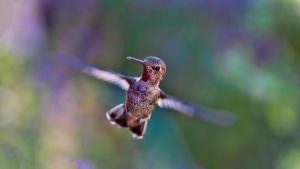Hummingbird Care
by Carol Buie-Jackson ~
The hummingbirds have been back since early April, but traffic at the feeders had been pretty light while they tended the first brood of chicks, feeding mostly insects for protein. Now we are seeing an increase of activity at the feeders, which means those chicks have left the nest and are now feasting on high-energy nectar as well.
 The immature hummers look a lot like the female, so sometimes it is hard to determine if they are the new chicks. The adult males are the ones with the ruby throats. Sometimes, if the light is just right, the throat will appear almost black.
The immature hummers look a lot like the female, so sometimes it is hard to determine if they are the new chicks. The adult males are the ones with the ruby throats. Sometimes, if the light is just right, the throat will appear almost black.
We need to give these new birds the best chance possible. Make sure your nectar is fresh. The higher temperatures can make it spoil faster, and with all the rain we’ve had, the nectar can also become diluted with rainwater. Cleaning and refilling the feeders after heavy rains or 3-4 days of hot weather will help you attract hummingbirds, and it’s better for them.
Hanging your feeders in a shady spot will help the nectar stay fresh longer, and using a weather dome over them can help keep rainwater out.
Using sugar–regular white cane sugar–with filtered or boiled water is the best combination for these small birds. Red dye can be harmful, so don’t add it or buy nectar with red dye in it.
When cleaning your feeders, use white vinegar and water. A little brush will help remove mold from nooks and crannies, and then rinse well.
The more feeders you provide, the more hummingbirds you will have. Space them 15-20′ apart, but make sure you put them where you will enjoy them the most. The activity will only increase throughout the summer.
About the author: Bird House on the Greenway on Rea Road and Wildology at Waverly are owned and operated by Carol Buie-Jackson and Jay Jackson. Both have been avid birders and wildlife enthusiasts for more than 30 years and are more than willing to share what they know about the local birding community. You can contact Carol at carol@greenwaybirdhouse.com.

